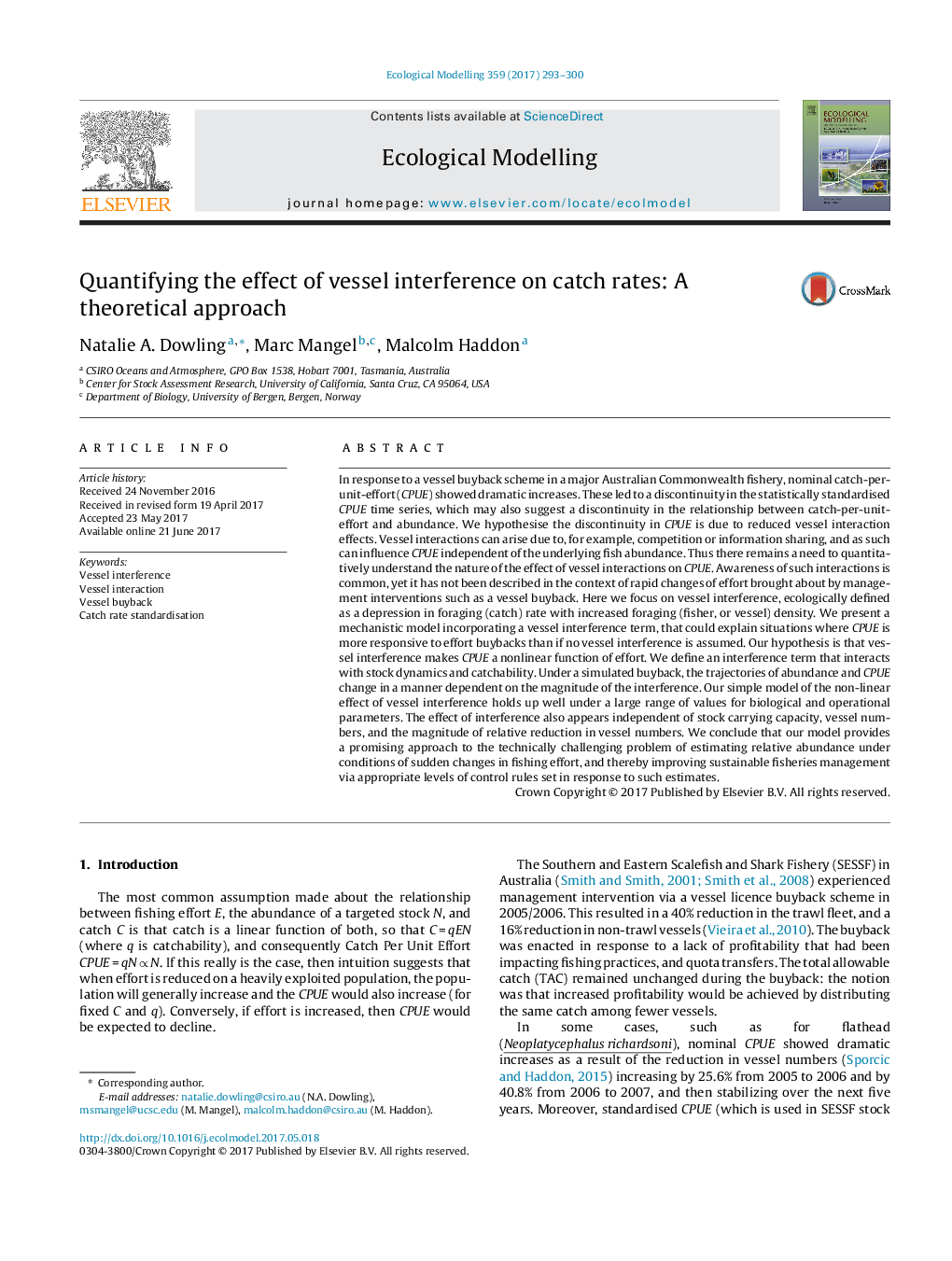| Article ID | Journal | Published Year | Pages | File Type |
|---|---|---|---|---|
| 5742141 | Ecological Modelling | 2017 | 8 Pages |
â¢We hypothesise that vessel interference makes catch-per-unit-effort (CPUE) a nonlinear function of effort.â¢We define an interference term, whose magnitude affects trajectories of abundance and CPUE under a simulated buyback.â¢Our simple model of the vessel interference effect holds across a range of biological and operational parameter values.â¢Interference appears to be independent of stock carrying capacity, vessel numbers, and relative reduction in vessel number.â¢Our model provides a promising approach to estimating relative abundance under sudden changes in fishing effort.
In response to a vessel buyback scheme in a major Australian Commonwealth fishery, nominal catch-per-unit-effort (CPUE) showed dramatic increases. These led to a discontinuity in the statistically standardised CPUE time series, which may also suggest a discontinuity in the relationship between catch-per-unit-effort and abundance. We hypothesise the discontinuity in CPUE is due to reduced vessel interaction effects. Vessel interactions can arise due to, for example, competition or information sharing, and as such can influence CPUE independent of the underlying fish abundance. Thus there remains a need to quantitatively understand the nature of the effect of vessel interactions on CPUE. Awareness of such interactions is common, yet it has not been described in the context of rapid changes of effort brought about by management interventions such as a vessel buyback. Here we focus on vessel interference, ecologically defined as a depression in foraging (catch) rate with increased foraging (fisher, or vessel) density. We present a mechanistic model incorporating a vessel interference term, that could explain situations where CPUE is more responsive to effort buybacks than if no vessel interference is assumed. Our hypothesis is that vessel interference makes CPUE a nonlinear function of effort. We define an interference term that interacts with stock dynamics and catchability. Under a simulated buyback, the trajectories of abundance and CPUE change in a manner dependent on the magnitude of the interference. Our simple model of the non-linear effect of vessel interference holds up well under a large range of values for biological and operational parameters. The effect of interference also appears independent of stock carrying capacity, vessel numbers, and the magnitude of relative reduction in vessel numbers. We conclude that our model provides a promising approach to the technically challenging problem of estimating relative abundance under conditions of sudden changes in fishing effort, and thereby improving sustainable fisheries management via appropriate levels of control rules set in response to such estimates.
